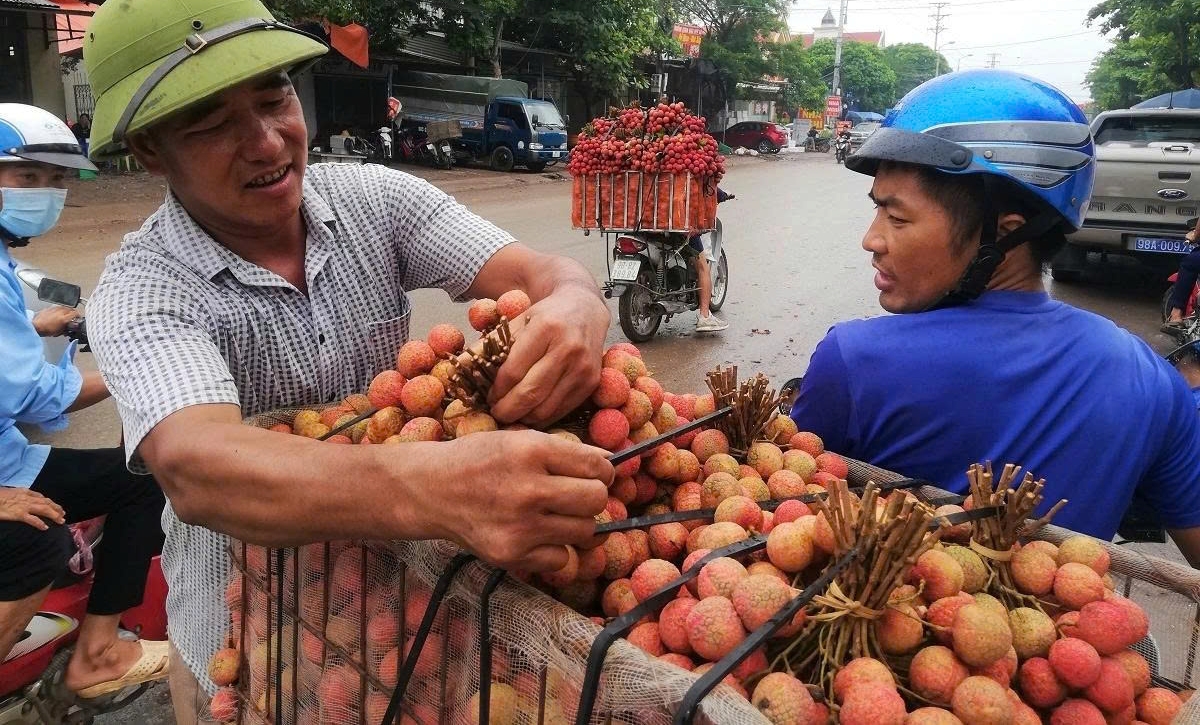Unlocking consumer markets for agricultural exports during peak season
VOV.VN - As Vietnam enters the peak harvest season for key crops such as rice, durian, lychee, longan, dragon fruit, and mango, there is an urgent need to find markets for these agricultural products to prevent the recurring issue of “a bumper harvest, falling prices.”

Establishing green lane for agricultural exports to China
On May 29, the first shipment of fresh Vietnamese lychees for the 2025 season arrived in Japan, signaling a promising start for the fruit in this demanding market. A total of 3.7 tonnes of high-quality lychees, sourced from GlobalGAP-certified farms in Luc Ngan district (Bac Giang province), marked the fourth consecutive year Vietnamese lychees have reached Japanese consumers.
Tokyo-based Senkyu Corporation, the importer and distributor, announced plans to make the lychees available in Japanese supermarkets and specialty stores from May 30. The company also aims to expand distribution channels to meet rising demand, including serving Japan’s Vietnamese community.
According to the Department of Crop Production and Plant Protection, Vietnam’s lychee output this year is expected to reach approximately 303,000 tonnes, an increase of 30% over the previous year. About 60% of the crop will be sold domestically, while the rest is earmarked for export.
Huynh Tan Dat, director of the department, confirmed that Vietnam’s plant quarantine system is fully operational. From June 1, plant protection officials will be stationed directly in growing regions to conduct inspections and sampling, ensuring compliance with international phytosanitary standards.
Although fresh Vietnamese lychees are available in over 20 countries worldwide, China remains the dominant importer of Vietnamese lychees, accounting for 90% of the export volume. China is also the top buyer of many other Vietnamese agricultural products. Currently, 14 types of Vietnamese produce are officially exported to China, generating billions of US dollars annually.
From May 27–29, a delegation led by Minister of Agriculture and Rural Development Do Duc Duy held working sessions with the leadership of China’s General Administration of Customs (GACC). The talks aimed to enhance bilateral cooperation and address issues in the export of agricultural and aquatic products, especially durian.
Both sides agreed to establish a "green lane” mechanism for agricultural exports. This initiative will fast-track customs procedures, with priority given to fresh fruits like lychee and durian. Border gate working hours will also be extended, including weekends and non-business hours, to facilitate smoother cross-border trade during the peak season.
Alleviating border congestion for agricultural exports

To ensure a smooth flow of agricultural products, the Prime Minister issued official dispatch No 79 on May 31, 2025, outlining a coordinated national approach from production to consumption.
Accordingly, the Ministry of Agriculture and Environment will align agricultural production with market demands, promote processing and storage solutions, and strengthen links between farmers, cooperatives, enterprises, and distribution networks. Localities are also tasked with sharing timely data on crop yields and harvest schedules to improve coordination.
These solutions will help enable export businesses, distribution chains, and retailers to strategically plan for consistent agricultural product consumption whist boosting sales during peak seasons. A key focus will therefore be placed on meeting the stringent standards of importing markets, especially China.
Meanwhile, the Ministry of Industry and Trade and the Ministry of Foreign Affairs will intensify trade promotion activities, organise fairs, and drive domestic sales through retail and digital platforms. The Ministry of Finance will prioritise customs clearance for fresh produce, particularly lychee and durian, to avoid border delays.
Northern border provinces are also asked to monitor and regulate traffic at key border gates. Businesses are advised to keep a close watch on market trends, adjust export volumes accordingly, and prepare for temporary storage of produce to reduce pressure on farmers during the peak harvest season.
Solving the market access issue for agricultural products requires collective action, not just from farmers, but also from government agencies, businesses, cooperatives, and consumers. By proactively expanding markets, improving quality, meeting international standards, and enhancing coordination across sectors, Vietnam can transform the challenge of a bumper harvest into a sustainable economic opportunity where products are both abundant and fairly priced.




